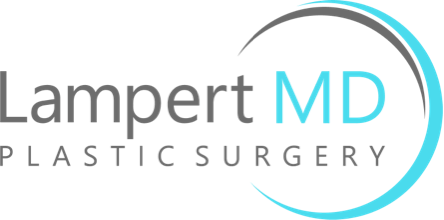
For many women, a mastectomy, even when medically necessary, elicits complicated feelings. This may be because aesthetically, the breast is tied not only to body image but to femininity, identity, and confidence. As such, rebuilding the breast is often the final, empowering step in recovery.
If you’re navigating your next steps after a mastectomy or prophylactic surgery, there are three primary reconstruction options to consider at Lampert MD Plastic Surgery in Miami: implants, fat transfer, and flap-based reconstruction. Each approach has its advantages, depending on your goals, body type, and cancer treatment plan.
1. Implant-Based Reconstruction
Implants are one of the most common and straightforward methods of breast reconstruction. This method typically involves one or two stages and can often begin immediately after a mastectomy, particularly with nipple- or skin-sparing techniques:
- One-stage reconstruction: An implant is placed during the mastectomy, often supported by mesh or acellular dermal matrix.
- Two-stage reconstruction: A tissue expander is used first to gradually stretch the skin and chest wall, followed by implant placement in a second procedure.
Breast implants offer the benefit of shorter recovery times and avoid harvesting tissue from another area of the body. However, they may not be the ideal option for patients who will require radiation therapy, as radiation can increase the risk of capsular contracture and affect aesthetic outcomes.
Learn more about implant-based breast reconstruction at LampertMD.
2. Staged Fat Transfer (Autologous Fat Grafting)
Fat grafting is an increasingly popular option for those seeking a more natural look and feel. Also known as autologous fat transfer, this procedure uses your body’s fat—harvested via liposuction from areas like the abdomen, flanks, or thighs—and carefully injects it into the breast area.
In staged fat grafting, the reconstruction builds gradually over multiple sessions spaced several months apart. This method can:
- Reconstruct a full breast without implants
- Improve softness and symmetry around implants
- Correct defects from prior surgeries or lumpectomies
- Reduce the risk of long-term foreign body complications
Some other notable benefits include the following:
- Fat grafting is minimally invasive, with faster recovery than flap-based surgery
- The technique is ideal for women who have had partial mastectomies or wish to avoid implants entirely
- It can even be combined with body contouring, such as abdominal etching, for aesthetic enhancement
As Dr. Lampert told the Miami Herald, “It’s less trauma to the fat cell,” which improves survival of the transferred tissue and results in longer-lasting outcomes (Miami Herald, 2020).
3. Flap-Based Reconstruction (Autologous Tissue Transfer)
Flap surgery involves transplanting skin, fat, and sometimes muscle from another body part to the chest. The most common flaps include:
- DIEP flap (from the lower abdomen)
- TRAM flap (also from the abdomen, but includes muscle)
- Latissimus dorsi flap (from the back)
- SGAP/IGAP flaps (from the buttocks)
This technique is highly sophisticated and requires microsurgery, but it offers several benefits:
- Results are completely natural-looking and feeling
- Avoids the use of implants or foreign materials
- Long-term durability and better symmetry in some cases
Flap-based reconstruction is especially valuable for patients who have undergone radiation therapy, which can make implant results less predictable. However, it involves a longer recovery and more extensive surgery than implants or fat grafting.
Experience Compassionate, Customized Breast Reconstruction with Dr. Joshua Lampert
No matter which approach you’re considering—implants, fat transfer, or flap reconstruction—your journey after mastectomy is profoundly personal and deserving of expert, individualized care.
Dr. Joshua Lampert works closely with patients and their oncologists to customize reconstruction timing, method, and safety based on individual needs and treatment plans. A board-certified plastic and reconstructive surgeon trained in Manhattan, he combines technical precision with artistic sensibility, approaching each patient with warmth and personalized attention.
Discover what’s possible in a state-of-the-art, AHCA-accredited surgical center committed to excellence, safety, and compassionate, individualized care. If you’re ready to explore your options for breast reconstruction after mastectomy, schedule a private consultation today.

